Cruising is the easiest way today for American’s to visit Cuba. However, it’s not like your typical Caribbean cruise destination. There are rules to follow for entry and for exploring. This article will go over what to expect when cruising to Cuba and provide some helpful tips that I’ve learned from my own experience. It will also provide my honest review of this once forbidden nation.
Growing up I never imagined I’d someday visit Cuba. This land has always been off-limits for Americans, at least in my lifetime. When I learned that Americans were suddenly being allowed to visit and that cruises were going, naturally I was very eager to go. However, knowing Cuba’s history, I had some reservations.
Many people I know refuse to give even a dime to this communist dictatorship, and with good reason. As an American, I agree with this notion. However, I don’t feel all of the Cuban people deserve this treatment because the people don’t necessarily support their own government. I’m sure like any country, many locals are just trying to get by however they can. This part of me felt compelled to help the PEOPLE of Cuba, while not supporting its government.
Plus, the “travel fanatic” part of me was incredibly curious to see just how Cubans lived, therefore my wife and I booked a cruise and the die was cast.
Cuba entry requirements
For those who are unaware, while the travel ban to Cuba has been lifted, there are still specific requirements for entry. To put it plainly, one must have a ‘reason’
The Office of Foreign Assets Control (OFAC) has set up 12 different categories that describe these reasons. In order to gain entry, you must select one of these categories when filing out your paperwork required for the visa.
The categories are as follows:
- Visiting family
- Humanitarian projects or to provide support to the Cuban people
- Official business of the U.S. government, foreign governments and certain intergovernmental organizations
- Journalistic activities
- Professional research
- Educational activities by persons at academic institutions
- People to people travel
- Religious activities
- Public performance, clinics, workshops, athletic or other competitions and exhibitions
- Authorization to provide travel services, carrier services and remittance forwarding services
- Activities of private foundations, research or educational institutes
- Exportation of certain Internet-based services
Cruise ship tourist travel falls into the category of “People to people travel” from the list above. When preparing to board your cruise ship, you are given a form to fill out where you self-declare one of these categories. If you’re like most Americans, you will only fit into the People to People travel category.
People to people travel allows American tourists to visit Cuba, but only if part of an educational tour group – thus to learn about the Cuban culture and its people. To explain this another way, American tourists are not free to tour Cuba on their own and go wherever they like under this category. You MUST have an arranged tour prior to arriving in Cuba or you will not be allowed off the cruise ship.
The cruise line will offer a selection of tours that you can choose from if you wish to purchase directly from them, or you can book your own tour prior to your cruise. We decided to book with the cruise ship, however if I had to do it again I may book from an outside company. I will explain this more in detail later in this article.
While you must have an arranged guided tour, you are allowed to explore freely on your own in the city before or after your tour. This was a concern of mine when booking the cruise, because I was afraid we wouldn’t have the option to shop for souvenirs, or perhaps try some local cuisine before re-boarding. I thought we may be stuck on the tour the entire time with no personal freedom. This was not the case at all. Our tour ended around 1:30pm and we were free to explore Havana on our own after that until the ships departure at 2:00am.
While free to explore, there are still certain buildings you are not allowed to enter such as certain hotels, and other prominent buildings in Havana. The cruise ship will provide you a list of these places.
Cuban visa / tourist card
Entering Cuba by cruise, the fee for the visa / tourist card is $75 and will usually be added directly to your cruise fare when purchasing. However, it would be a good idea to double check with your booking agent to ensure this is included, though they will usually tell you.

Prior to boarding your cruise, you will be issued a Cuban visa at the departure cruise terminal. You will need to provide this to the customs officer customs in Havana, so do not lose it.
Arriving at Cuba – First Impressions
The day of arrival into Cuba was an exciting one. My wife and I didn’t know what to expect, and as we spotted Havana from the deck of our ship it felt as if we found the lost city of Atlantis. There was Cuba – the forbidden land, right before us! For a minute I almost forgot the nation was once a hostile one and one that is still under a communist dictatorship. It felt so strange that I was now seeing it this close with my own eyes.
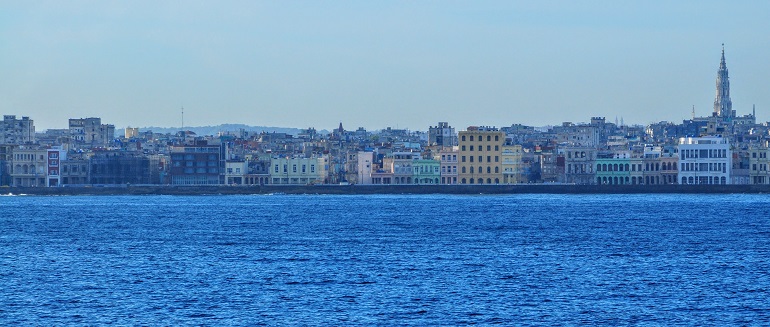
As we got closer to shore the excitement grew further because we could see many colorful buildings lining the
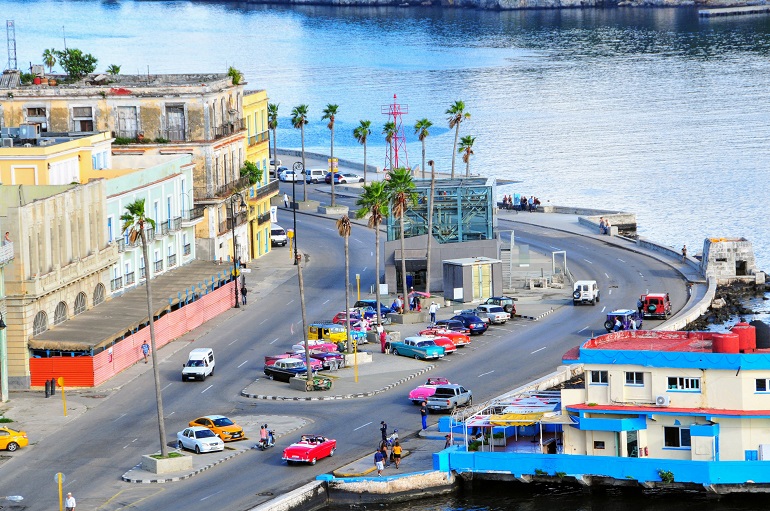
It felt as if we were being transported back in time.


Pulling into Havana Harbor was actually really beautiful. To the west was the city center where many beautiful buildings stood including the capital building – called “El Capitolio” which was sadly under renovation during our visit. To the east stood a giant statue of Jesus Christ called “Christ of Havana”. While a bit smaller than the world famous Christ the Redeemer statue that overlooks Rio de Janeiro, Brazil, it was still very impressive. We learned later on our tour that Christ of Havana statue faces the harbor as to provide blessings to all incoming ships.
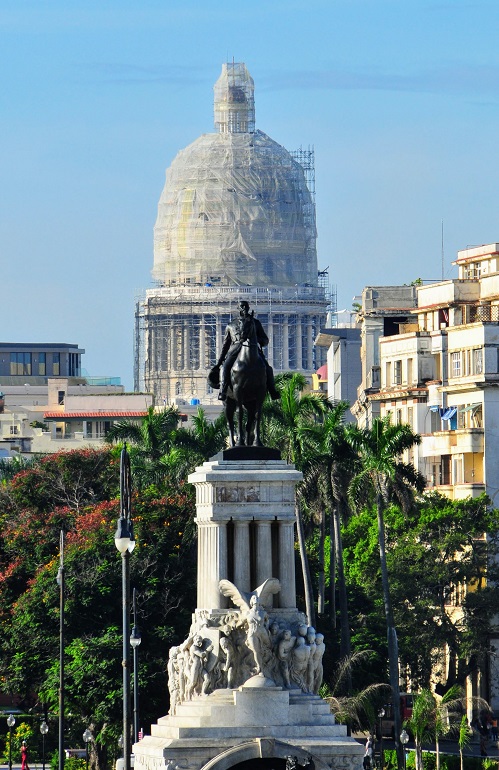
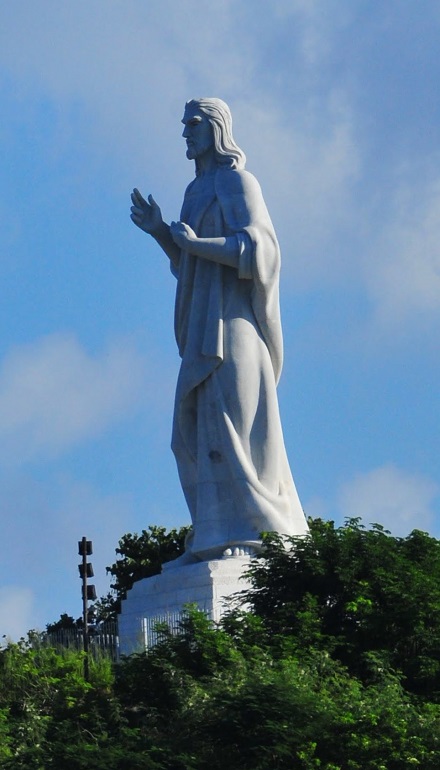
Disembarkation in Havana
As your ship prepares for arrival into Havana Harbor, the cruise director will provide procedures on how and when to disembark the ship. Based on the pre-arranged tour you booked, you will need to meet at a certain location in the ship at a certain time.
For example, our tour – named “Ultimate Highlights of Havana, Old & New” met in the ships main theater at 8:00am the morning of our arrival. Don’t worry about not knowing where to go. The ship organized this very well with many announcements, even the night before.
After arrival into port, and the Cuban customs officials cleared the ship, different groups will be called one at a time to disembark the ship. Once your group is called, you simply follow the leader to the gangway and enter the terminal building in Havana.
Cuban Customs
Once you enter the terminal building you will need to go through Cuban customs. This part was incredibly interesting and not at all what we expected.
Much like entering the secure area at an airport, you have to go through metal detectors and have any bags you are bringing with you screened. You must then hand your passport and your Cuban visa to a customs official for processing. While all of this was normal, the part that was extremely strange was the Cuban customs officials themselves. All of the officials were young women, some who looked no older than 18 years of age. The way they were dressed was even more shocking. Although they wore an official uniform which includes a white shirt and skirt, many of them wore fish-net stockings! It was the strangest customs experience we’ve ever encountered in our many travels.
Once through customs, we headed to the currency exchange center within the terminal known as the CADECA. This is a requirement as American currency is not accepted, and credit and debit cards will not work in Cuba. Therefore, in order to purchase anything, you will need Cuban currency.
Currency Exchange – CADECA
There are two types of Cuban currency in circulation, The Cuban Peso (CUP), and the Cuban Convertible Peso (CUC). The CUC’s are used by tourists and CUP’s are used by locals. They have very different exchange rates as well, but the CUC is the only one you’ll need to be concerned about as it is the one you will need for your visit.
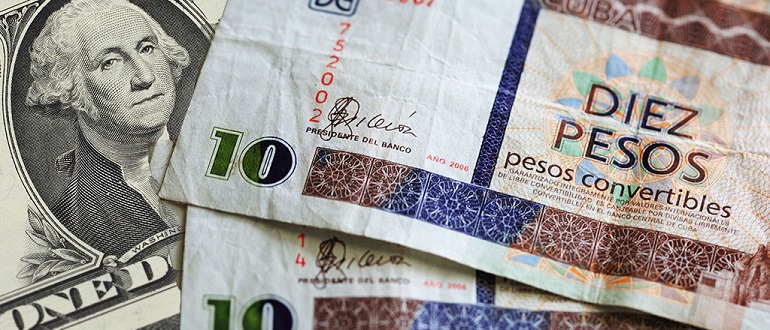
CUC’s are pinned to the American Dollar with a 1:1 value (1 CUC = $1.00), however keep in mind there is a hefty exchange fee of 13% for changing American currency. If you have any Canadian currency or Euros laying around from a previous trip, it will save you money by bringing it with you. The exchange fee for changing Canadian currency or Euros is only 3%. We brought Euros with us and were able to save the additional 10% fee.
Touring Havana
After exchanging currency, we were instructed on where to go to find our tour bus. There were plenty of English speaking workers offering directional assistance which was helpful.
We went down the stairs and exited the Terminal Sierra Maestra at the Plaza de San Francisco. We boarded our tour bus which was clearly marked (there were many), and prepared for our tour.
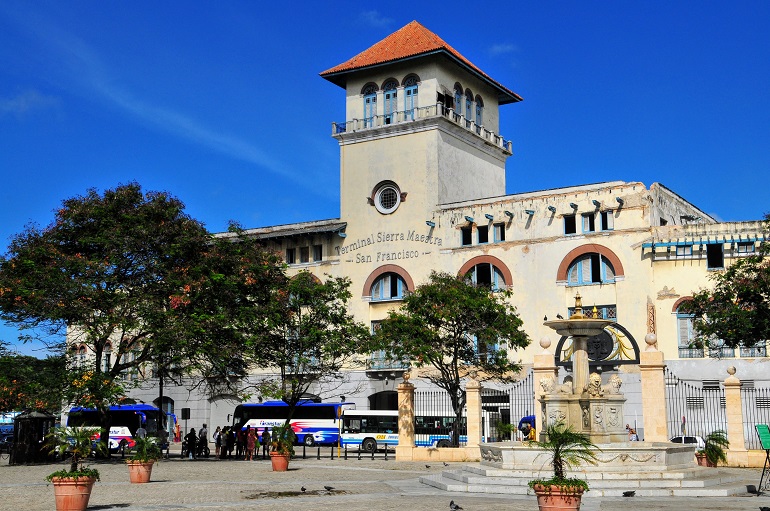
As I stated earlier, there were many tours to choose from that were offered by the cruise line. This included tours to Cuban rum and cigar factories, agricultural farms, art museums, and more. There are also tours if you’re interested in entertainment during your
While the tour was enjoyable, if I were to do it all again, I may opt to book a private tour which I learned takes you to many of the same places we went, but with a private guide in a 1950’s American classic automobile. The ship offered this tour as well, but the price was astronomical at $339 per adult. While I haven’t quoted private companies, I’m almost certain they’d be far less expensive as many others we came across chose this option.
Highlights of Havana
Our tour started by driving through the older historical sections of Havana, which was quite charming. As we passed famous city landmarks and buildings, our tour guide would give us a detailed description of what we were looking at and its importance to Havana and Cuba. Some of the architecture in the old city was very beautiful, and the historic American cars added to the uniqueness.
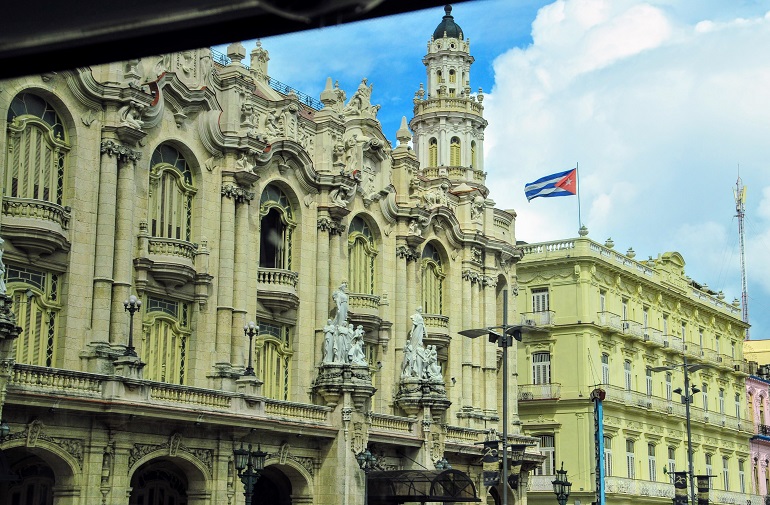
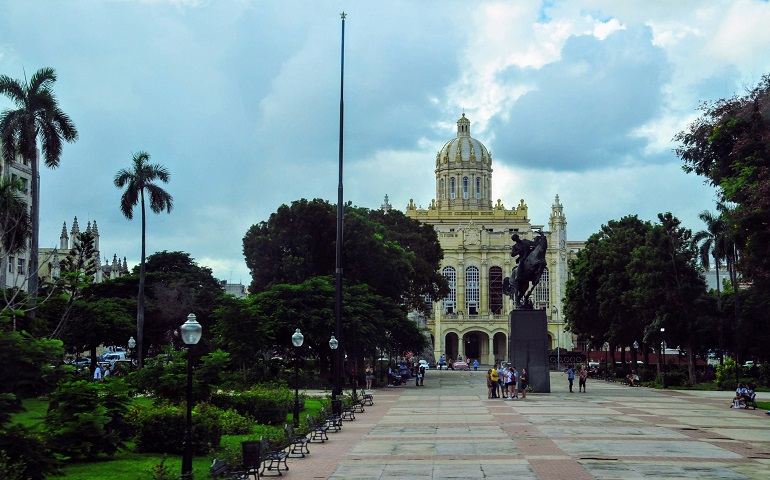
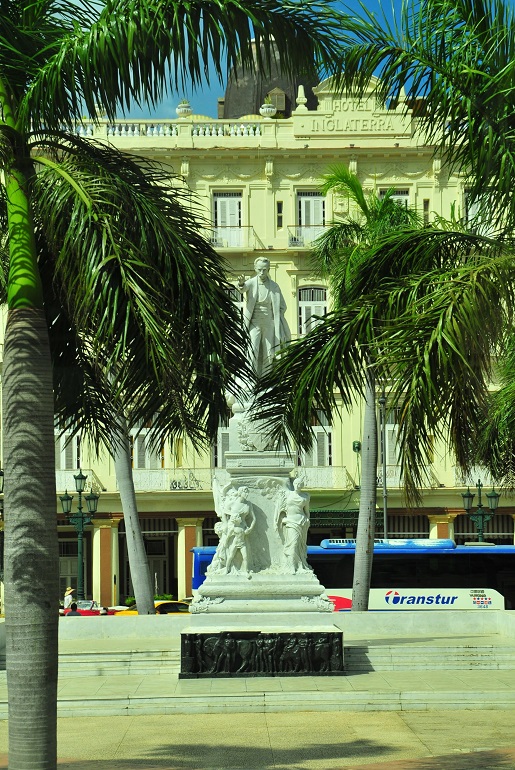
Before long we ventured further from the old historical city center and immediately the surroundings began to deteriorate. Garbage lay on the streets and many buildings were crumbling or in a pitiful state of disrepair. It was an eye-opener.
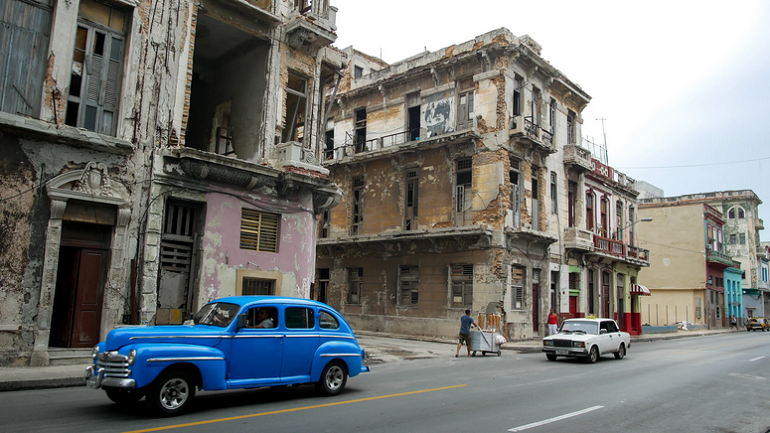
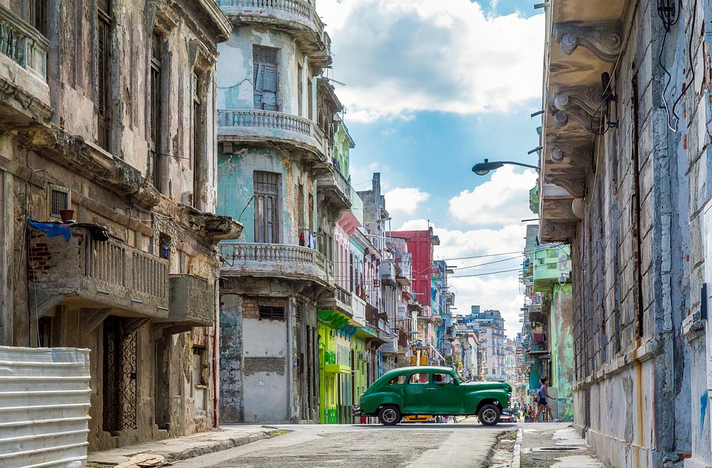
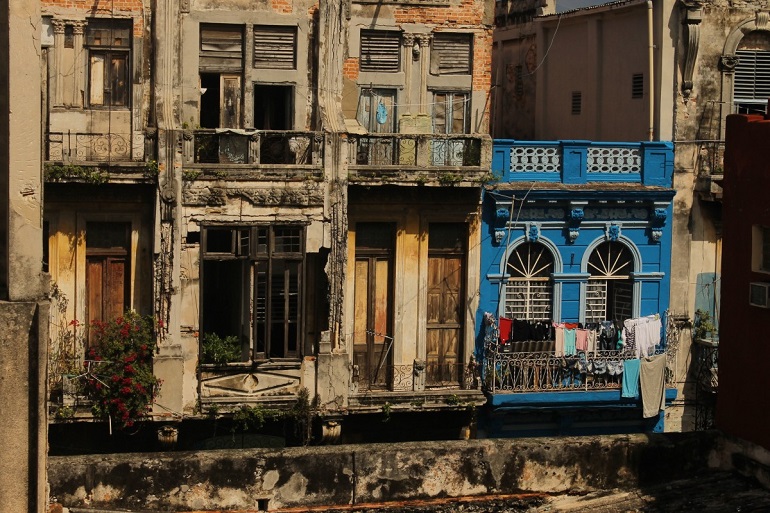
The tour guide blamed earthquakes for the state of the building falling apart, however with the last major Cuban earthquake occurring in 1992 (26 years ago), this was a poor excuse for the current state.
La Plaza de la Revolución
Our first stop was Havana’s famous Revolutionary Plaza. This is where Fidel Castro addressed millions of Cubans after the revolution forced out Batista in 1959. Cuba would never be the same after this as we all know.
The plaza itself was very intimidating. Massive sized memorials to famous revolutionaries decorated the surrounding government buildings. To the north, on the side of the Ministry of Interior Building, was a large sculptural relief of Che Guevara – the infamous Marxist revolutionary. The words below his portrait read “Hasta La Victoria Siempre” – which means Until the Everlasting Victory, Always.
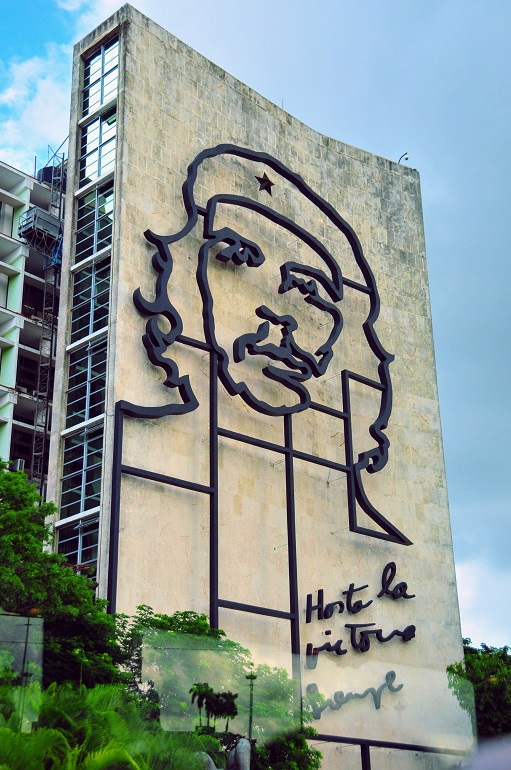
The adjacent Telecommunications Building had an equally large portrait of revolutionary Camilo Cienfuegos with words saying “Vas
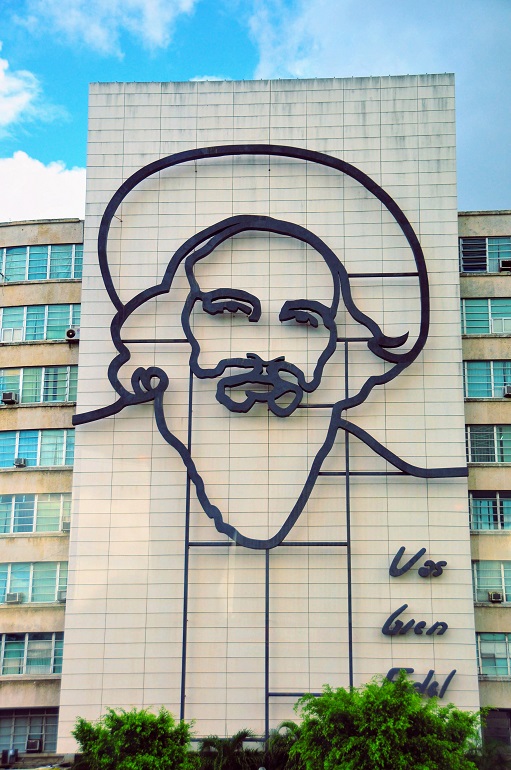
While we never felt unsafe here, it didn’t give us a warm and fuzzy feeling either.
The bus stopped here to let us get out to take photos with many of the American classic cars who apparently like to park here.

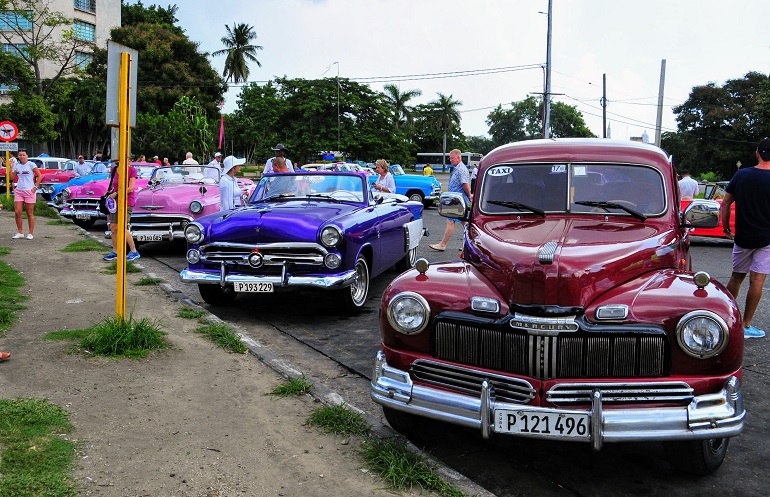
The south side of the plaza hosted a large star-shaped marble tower known as the José Martí Memorial. It is the largest monument to a writer in the world.
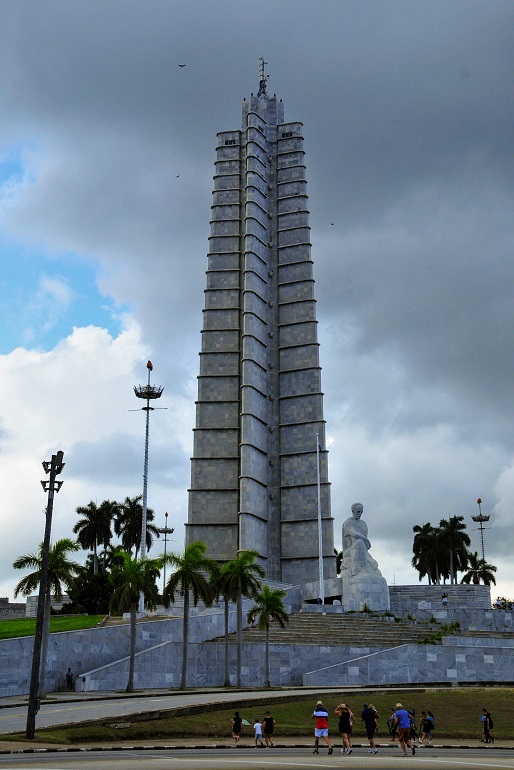
Cementerio de Cristóbal Colón
After departing Revolutionary Plaza, we headed to the Colón Cemetery – named for Christopher Columbus (though he is not buried here). The cemetery is famous for its elaborately sculpted memorials and was filled with hundreds of them.
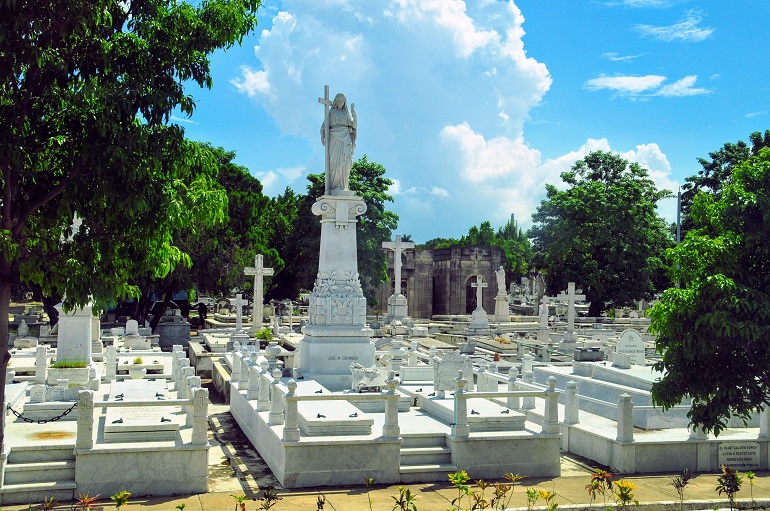
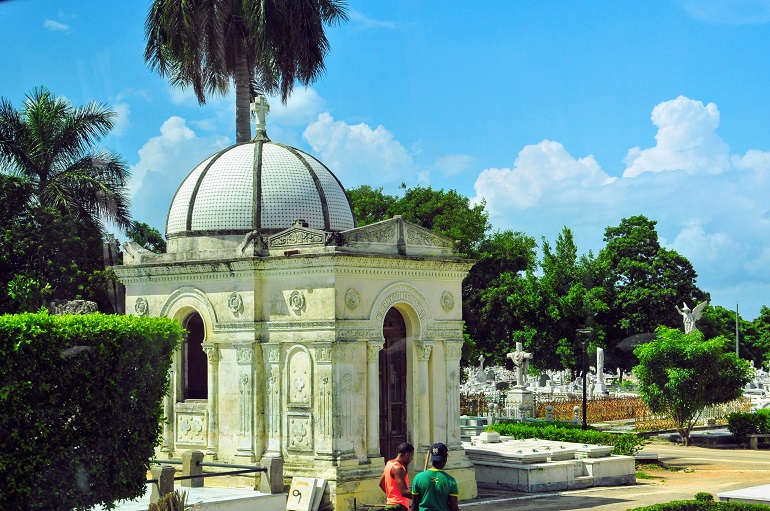
Fusterlandia
We then drove to a neighborhood known as Fusterlandia after the Cuban artist José Fuster. The neighborhood is famous for its display of colorful mosaic tilework that covers almost everything, including doctors’ offices, bus stops, fountains, benches, gateways, and more. We got off the bus and explored the area and gained access to Fuster’s studio which was like a mosaic tile amusement park.
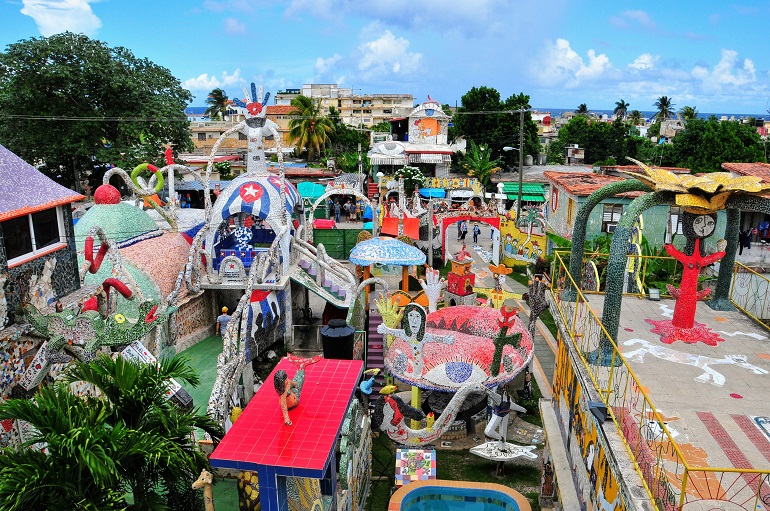
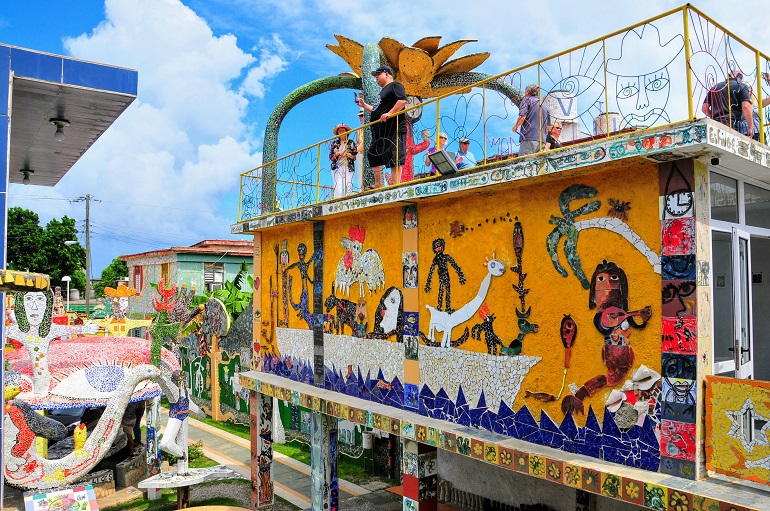
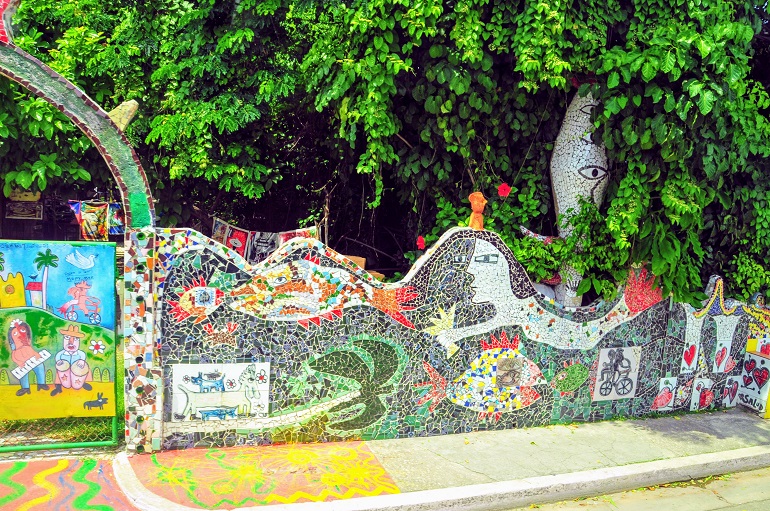
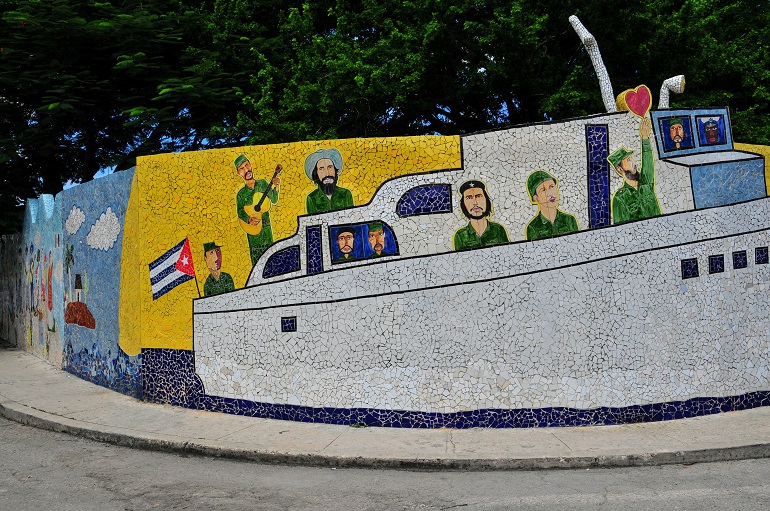
There were some local shops here as well as handmade authentic souvenirs that could be purchased from locals.
Communist Cuba
Departing from Fusterlandia, we headed through the western side of Havana on our way to our next destination. Our tour guide explained the workings of Cuba’s governmental programs, and how it provides for its citizens. While she never exactly said it, her tone and display of facts made it seem like she was proud of this “excellent” life in Cuba.
She went on to explain how there are no homeless in Cuba because the government will provide you a place to live. Homes were even taken away from the wealthy to provide for the impoverished.
She explained how healthcare is completely free, and even cosmetic plastic surgery was fully government funded.
As she described these programs as being “wonderful”, we drove though very run down areas with small dirty looking markets, and passed by a hospital than looks like it hasn’t changed since it opened in 1982. In short, I don’t think anyone on the bus was buying her wonderful outlook on Cuban life.
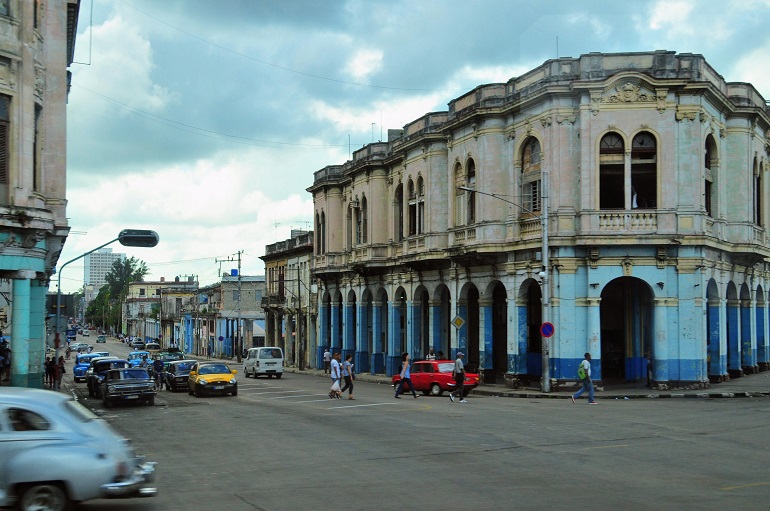
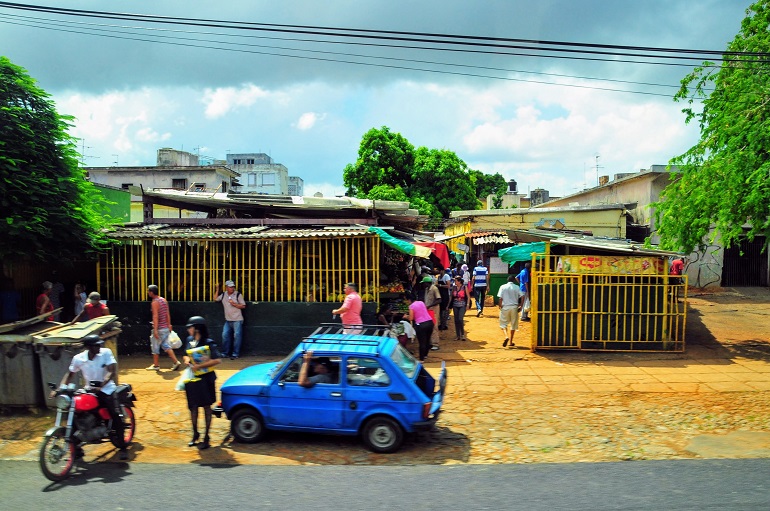
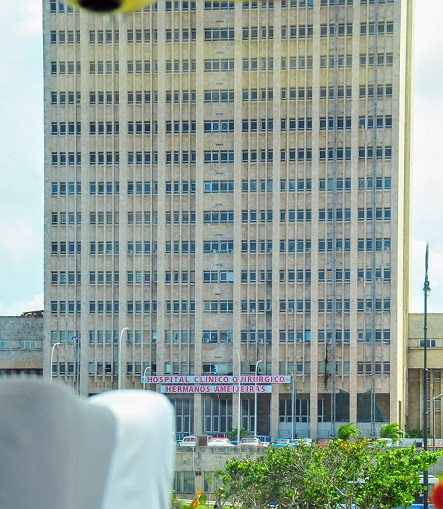
She then explained the education system – again completely free, and how different school ranks (elementary, middle, and high school) all had color coded uniforms. We could even see students walking along the streets outside the bus wearing their respective colors (red, blue, and brown).
Once students graduate, they must choose from a list of predetermined jobs based on the needs of the nation.
Cubans were not allowed to own personal vehicles prior to 2011 without permission from the government via a permit. These were usually restricted to diplomats, technicians, doctors, those on foreign missions, and those with bank accounts outside of Cuba. As of 2011, Cubans can freely purchase a vehicle, but at astronomical rates that no one can afford. (Example: Most vehicles cost 4x-5x as much in Cuba as they would in the US or Europe, and the average Cuban wage is only $20 per month).
The American classic vehicles (all dating from 1959 and older) were given (by Castro) to the driver and servants of the rich and prominent Americans who resided in Cuba prior to the revolution. These cars are sort of a souvenir of the Cuban Revolution and are kept in the family as sort of a badge of honor.
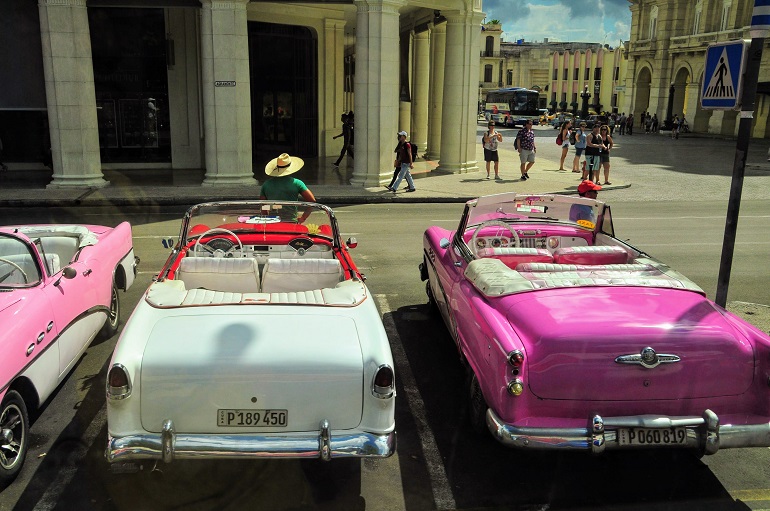
Castillo De Los Tres Reyes Del Morro
We arrived back in the historical district and the scenery got much better. We visited Morro Castle which stood of the banks of Havana Harbor. Within the old fortress was an authentic Cuban rum and cigar store. While we don’t drink or smoke, I went in to see what it looked like and what I saw looked like the New York Stock Exchange of cigars. People were crammed all around the counters with money in hand trying to get their share of the famous Cubans. My wife and I took in the scenery of the harbor and enjoyed the breeze.
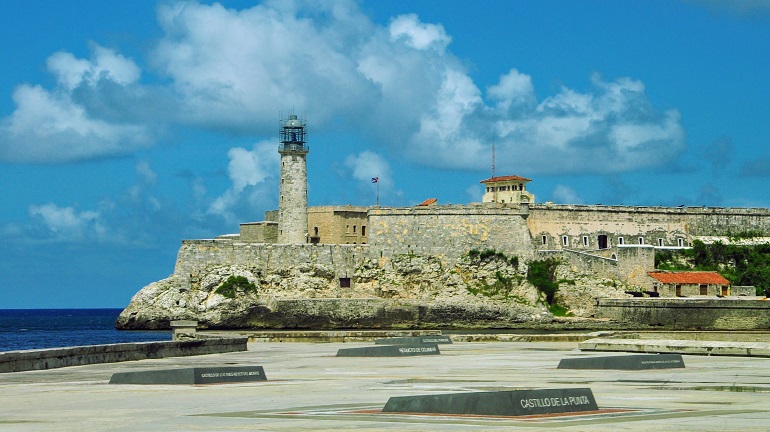
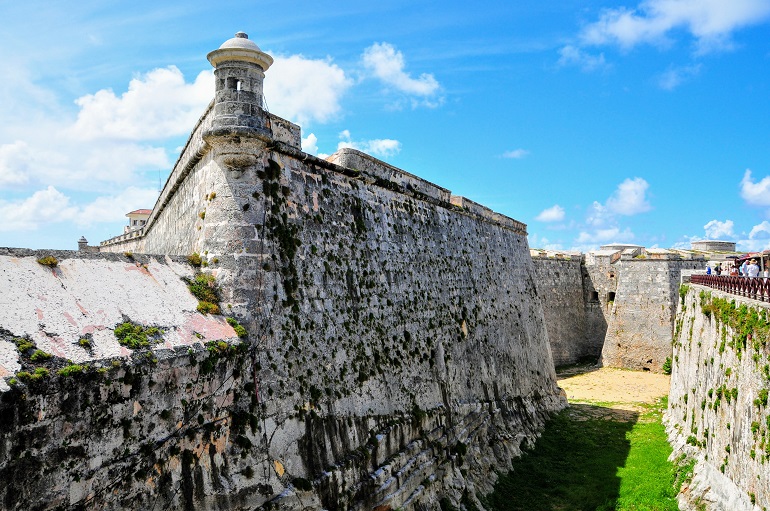
Cristo de La Habana
The last stop of the tour was a visit to the Christ of Havana statue we saw from the ship while entering the harbor. Having been to Rio de Janeiro and visiting the more famous Christ the Redeemer statue, I was excited about this stop. However, unfortunately everyone on the bus was more interested in getting back to the ship for lunch, so we didn’t get out here. I was disappointed, but I was able to snap this photo from the bus.
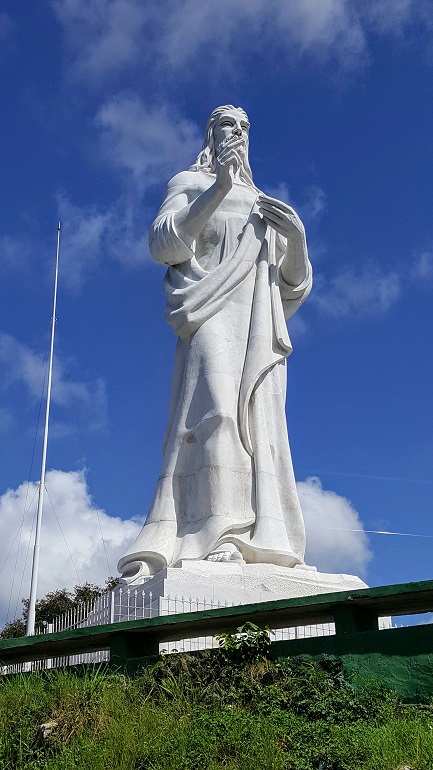
By the time we arrived back at the ship, we were tired of “exploring”. We walked around the old and historic downtown area for a while and headed back to the ship for lunch. We initially wanted to try a restaurant that we saw featured on the Food Network’s Diners, Drive-Ins and Dives, however it wasn’t within walking distance so we didn’t.
Evening in Old Havana
Later that evening I went out again on my own to see a little of Havana at night – mostly because I enjoy photography, and wanted to get some night shots.
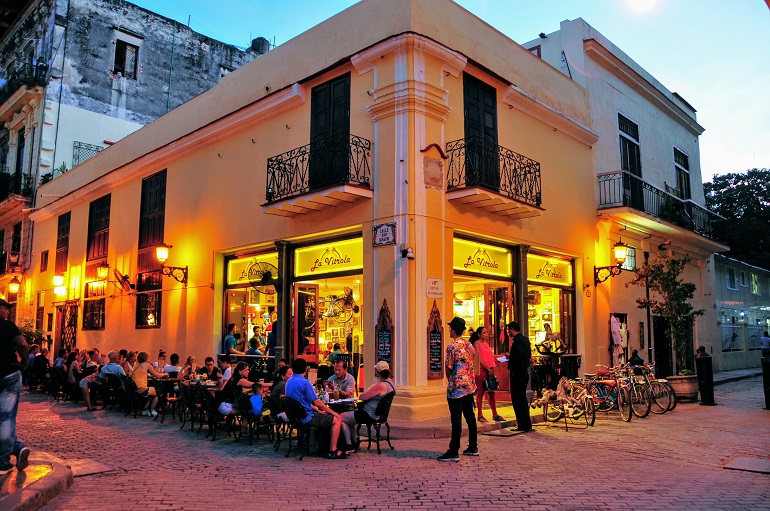
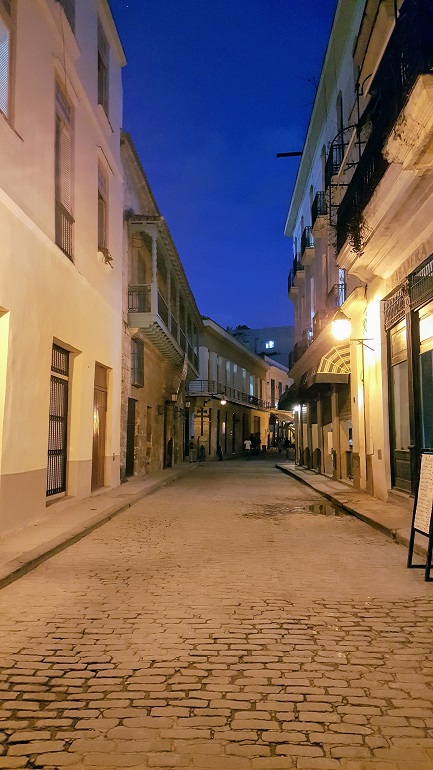
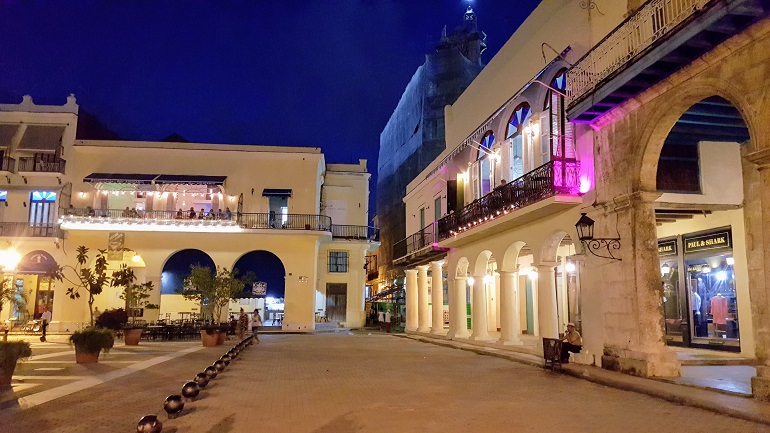
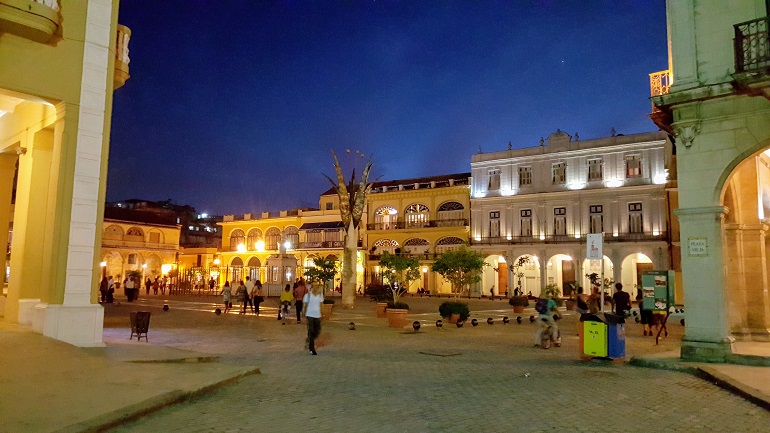
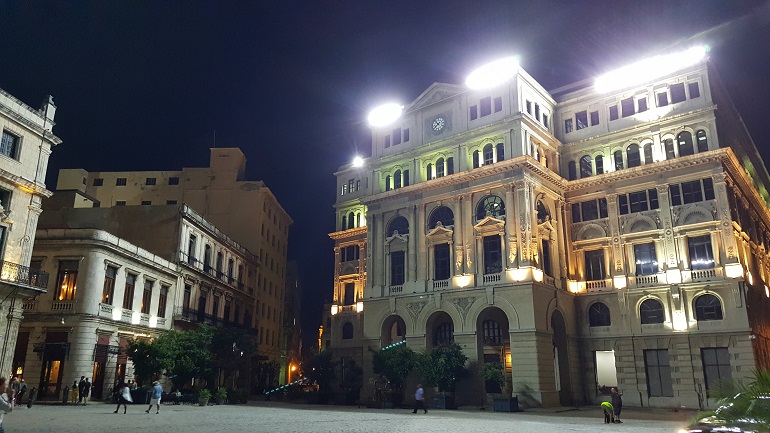
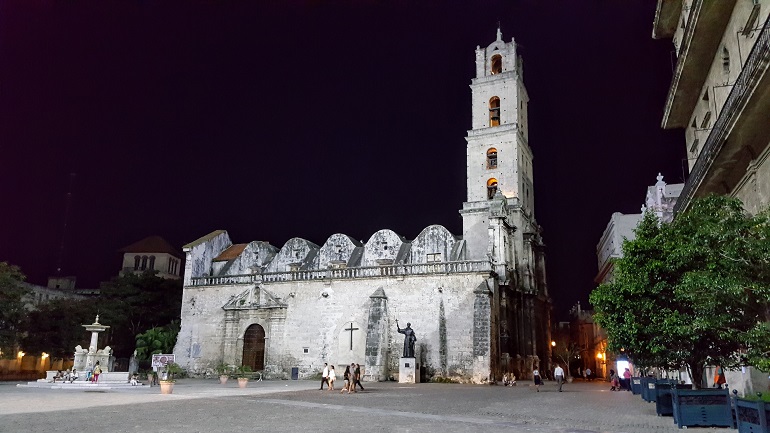
I walked down some alleys and streets and happened to pass an open-air style restaurant where an authentic Cuban dance was being performed on stage before the patrons who were eating their dinner. I stopped to video a portion of it which was probably one of the coolest things I saw while in Cuba.
As I strolled on further I noticed a young Cuban family (husband, wife, and young child) enter a building that appeared to be crumbling. Out of shear curiosity I watched as I was thinking “Where are they going?” I discovered the building appeared to be an apartment building as the couple climbed the stairs with their child. The building was in such bad condition it probably would have been condemned in the USA. I was simply stunned. “They live here!” It started to really hit home how bad the Cuban people have it. And the even more stunning part was, some (as in the tour guide) don’t even realize this, because they aren’t allowed to experience life elsewhere.
As I walked back to the ship it got darker and darker, and I could see many other locals roaming the dark and narrow alleys. While I never felt unsafe, I was starting to feel uncomfortable as the night crept in further. I made it back onboard by 9:00pm and I had seen enough. While the ship was staying in Havana until 2:00am, I personally felt this was a bit excessive. Even the ship next to ours started backing out of port, ready to depart by 9:30pm, which to us would have been better.
Final Thoughts
We very much enjoyed our visit to Cuba and are glad we got to experience it. It was definitely an eye opener to experience the disparity between life in Cuba versus life in the USA. I truly hope that in the future the people of Cuba will be able to experience a better life – one of freedom and economic prosperity. Perhaps then they might realize how much more life can offer.
Since we’ve been back people have asked us if we would ever return to Cuba? The short answer is we have no plans to. While I personally wouldn’t mind seeing some other parts of Cuba, it’s not high on my bucket list. But you never know what the future may bring.
I really appreciate you reading my blog, and I hope you enjoyed this article. If you would like to be notified of my next article, please subscribe using the form on the right sidebar (scroll down for mobile devices). Thank you so much for your support! Happy travels!
Disclosure: There are some affiliate links on this page. While the prices of the items displayed on this website are no different than on each advertisers websites, we do earn a commission if you choose to purchase. Thank you for supporting Off with the Kids and helping us share our adventures!







I truly enjoyed this blog! Your detail, explanation and photographs are so well written and Iillustrated it almost makes me want to take this cruise and experience it ourselves. Thank you for such clarity.
The main highlight in this blog is the dashing photography. That’s really stunning. The way you conveyed this blog is awesome.
Thank you so much for the kind comment! It’s much appreciated!